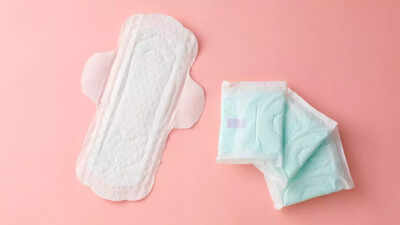How often should you change your sanitary pad? Menstrual hygiene and health risks explained |

Maintaining proper menstrual hygiene is a critical aspect of women’s health. Among the most common questions about periods is how often sanitary pads should be changed. While the timing may vary depending on your flow and the type of pad you use, there are clear medical guidelines that help prevent discomfort, odour, and infection. Regular pad changes are not only about staying fresh, they are essential for protecting the skin and preventing harmful bacterial growth. In this article, we’ll discuss how frequently you should change your pad, the health risks of wearing one too long, how to manage overnight use, and key tips for maintaining good menstrual hygiene every day.
Why changing your pad regularly matters
As a general rule, you should change your pad every 4 to 6 hours. On heavier flow days, this might need to happen more often. On lighter days, a bit more time may be acceptable, but even if the pad doesn’t look full, it’s not recommended to wear it for more than 6 hours.A study published in the Journal of Pioneering Medical Sciences examined menstrual hygiene practices among school-going adolescent girls in Shimla District, Himachal Pradesh. The study found that 82.2% of respondents reported changing their sanitary pads every 4–6 hours, aligning with recommended hygiene practices
Menstrual blood contains not just blood, but also tissue and mucus. When left against the skin for too long, this creates a warm, moist environment, perfect for bacteria to grow. If you don’t change your pad regularly, you may experience:
- Irritation and rashes
- Unpleasant odours
- Skin infections
- Increased risk of urinary tract or vaginal infections
In severe cases, the skin can become so irritated that it peels or forms sores. For both hygiene and comfort, timely pad changes are essential.
Risks of wearing a pad too long
Many people wonder what happens if they wear a pad for an extended period, especially 24 hours. The answer is simple: it’s highly unhygienic and potentially harmful. Wearing a pad for too long, whether it’s 24 hours or even just over 8 hours, can lead to:
- Rashes and chafing: Friction combined with moisture irritates the skin.
- Infections: Warm, damp areas are ideal for bacterial or fungal growth.
- Strong odour: Accumulated menstrual flow can cause a foul smell.
- Discomfort: A saturated pad feels bulky and sticky.
Importantly, you don’t need to wait until your pad is full. Changing it regularly helps avoid physical discomfort and emotional stress caused by leaks or odour.
Wearing a pad overnight: What’s safe?
Overnight bleeding is a common concern during menstruation, and many people want to know how long a pad can be worn while sleeping. Overnight pads are designed for longer wear, they are more absorbent and often longer in length. However, even these should not be used for more than 8 hours.If you tend to sleep for longer periods, consider:
- Setting an alarm to wake up and change your pad.
- Wearing a fresh pad right before bed and changing it immediately upon waking.
Even overnight, prolonged use beyond 8 hours can affect hygiene and comfort.
Choosing the right pad and staying hygienic
Selecting the right pad for your flow and activity level is just as important as changing it on time. Options range from ultra-thin to maxi and overnight pads. During the day, a regular or thin pad may be enough. At night, opt for something longer and more absorbent. Here are some simple menstrual hygiene tips to keep in mind:
- Avoid scented pads or powders: They can irritate sensitive skin.
- Always dispose of used pads properly: Wrap and place them in a closed bin.
- Wear breathable, clean underwear to avoid infections.
- Never reuse a disposable pad.
- Carry extras when you’re out, especially on heavy flow days.
- Wash your hands before and after changing your pad.
Maintaining good menstrual hygiene is essential not just for comfort but also for preventing infections and other health issues. No matter how light your period may be, you should change your pad every 4 to 6 hours, and never wear the same pad for more than 8 hours, even overnight.Disclaimer: This article is for general informational purposes only and is not a substitute for professional medical advice, diagnosis, or treatment. Always seek the guidance of a qualified healthcare provider regarding any medical condition or lifestyle change.Also Read: 5 benefits of vitamin B12 for pregnant women: Supporting energy, immunity, and fetal development






